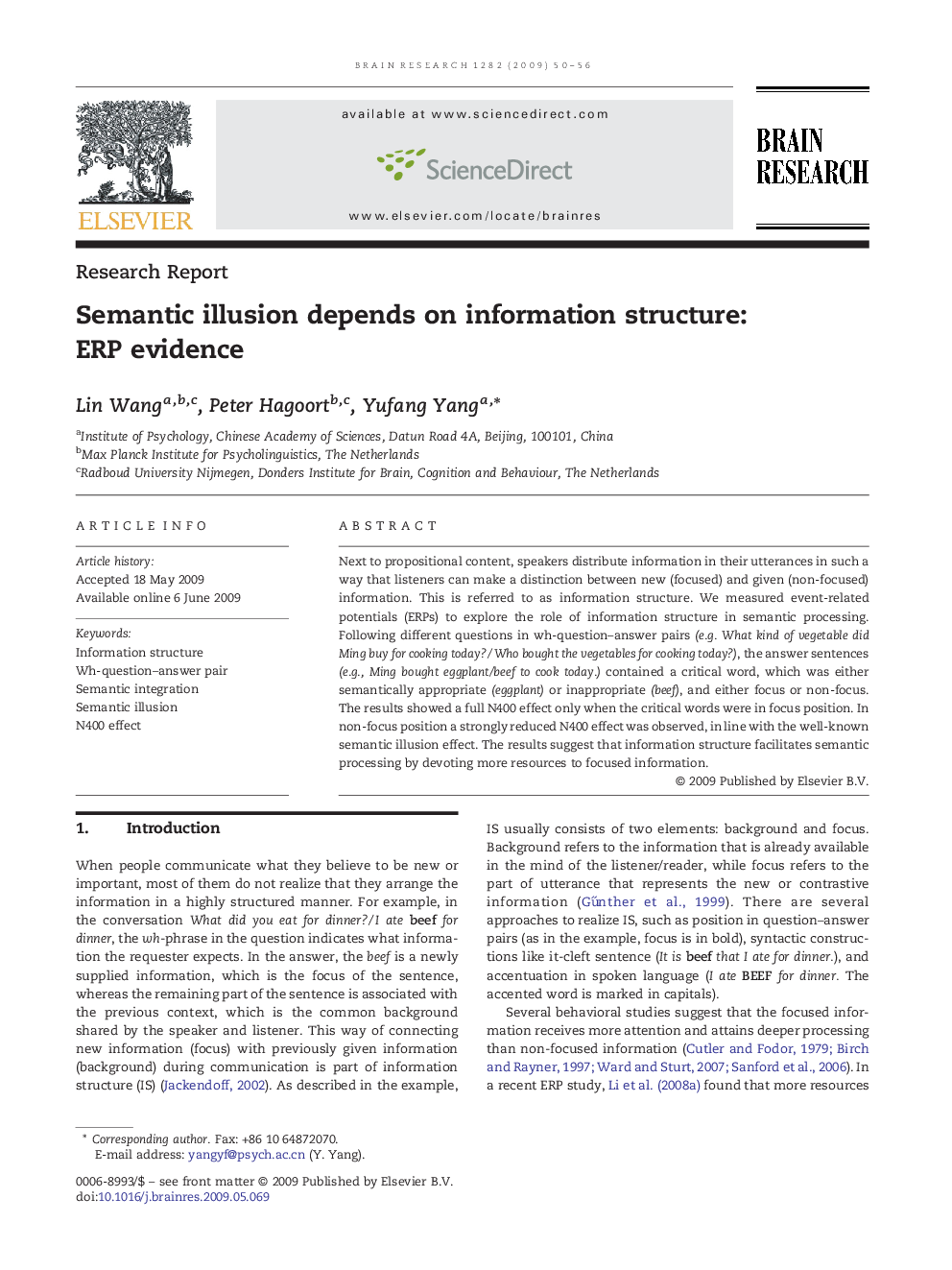| Article ID | Journal | Published Year | Pages | File Type |
|---|---|---|---|---|
| 4328084 | Brain Research | 2009 | 7 Pages |
Next to propositional content, speakers distribute information in their utterances in such a way that listeners can make a distinction between new (focused) and given (non-focused) information. This is referred to as information structure. We measured event-related potentials (ERPs) to explore the role of information structure in semantic processing. Following different questions in wh-question–answer pairs (e.g. What kind of vegetable did Ming buy for cooking today? / Who bought the vegetables for cooking today?), the answer sentences (e.g., Ming bought eggplant/beef to cook today.) contained a critical word, which was either semantically appropriate (eggplant) or inappropriate (beef), and either focus or non-focus. The results showed a full N400 effect only when the critical words were in focus position. In non-focus position a strongly reduced N400 effect was observed, in line with the well-known semantic illusion effect. The results suggest that information structure facilitates semantic processing by devoting more resources to focused information.
